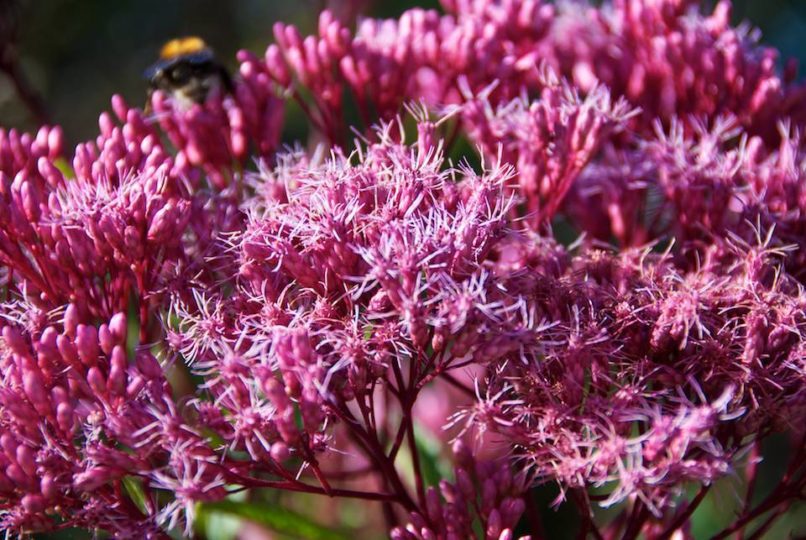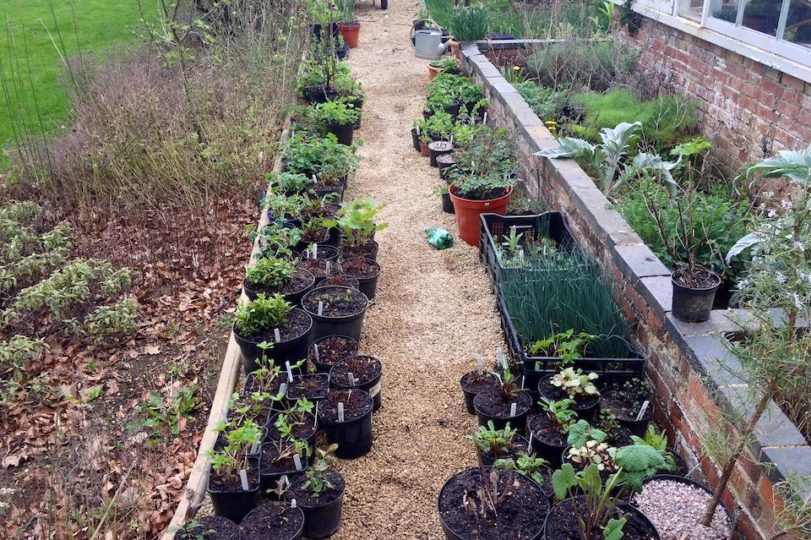The Oxonian has moved. Fortunately, well within the county boundaries to ensure the brand name is still very much relevant, but the address has changed. Long arduous months of intensive cerebral contorting led to a difficult, but lucid decision to pack and go. Moving house is a tedious, stressful activity, but for us green-fingered lot, particularly so, when it comes to the garden.
Gardens are cunning. From the moment your spade has had even a whiff of soil, you’re hooked. And with each successive season, that emotional tap root grows ever deeper, making it increasingly difficult to leave your well-tended garden for pastures new. The subsequent temptation to cut your losses and take all of one’s beloved horticultural treasures is enormous, but at the same the thought of stripping the garden is simply horrid. On that note, I agree with Victoria Summerly1 who described the digging up of a garden as, ‘the sort of behaviour that is on a par with vendors who remove the lightbulbs‘.
That being said, there are plants, that have been carefully collected after years of searching, special gifts, or are simply of strategic personal importance – part of one’s gardening soul, so to speak. There is also that niggling worry, that new owners could very easily bulldoze all of one’s prized plants in favour of decking or some other horrid end. Being of a pathetically sentimental constitution when it comes to all things plants, some prized specimens have now been relocated to their new home. However, throw caution to the wind as it’s not simply a question of uprooting the odd plant, as one could face serious legal actions.
The legal jargon
Before we even utter any of the legalities, it is of course economically silly to strip the property of any appeal before you sell, as a well tended garden can add 10-15 % to the value of a property. Agreed, plants in gardens constitute a huge investment of both time and capital on the part of the gardening owners, but one must equate that to the value of the garden in terms of the total property value.





Unless otherwise agreed, plants in the garden form part of the sales agreement and removing them without explicit permission could result in legal action and/or the invalidation of the transaction. Generally speaking, all landscaping; that is any type of plant with roots firmly ensconced in the ground, is considered a fixture. Plants in terracotta pots are excluded from the home’s fixtures and fittings inventory list, and can hence be taken without any legal recourse. Pot included that is!
Once contracts are exchanged, the people moving out are bound by that agreement and, if they take anything else from the garden, might leave themselves open to legal action. Note, the same would apply if there were no agreement in the contracts relating to garden property.
One can of course stipulate in the contract that some plants will be taken, but that does mean each plant and its location must be itemised carefully, and one must subsequently win full agreement from the buyer and their solicitor beforehand. I don’t know about you, but the thought of pin-pointing any plant in the herbaceous borders seems an impossible task!
Planning is the new black
Once the legalities are clear, you need a plan to move the plants you wish to take. We were very fortunate in that at the time of our move, the house was to remain in family ownership. Hence, we had time, free of any legal obligation to take prized plants, cuttings, divide and/or collect seeds.
Before starting anything though, consider the following;
- Timing. Moving plants in midst their prime season is fraught with danger. If there is even a remote chance of their not surviving, leave them well alone.
- Soil texture, structure and PH will probably be very different in the new garden. Choose wisely therefore.
- Consider if you can, what is available in the new garden you are about to inherit. No value in doubling up.
- Be inspired by your new garden’s location, plants, trees and so forth. What looked good in your old garden, won’t necessarily work for your new garden.
- Anything with a tap root, should be left well alone. Unless you’re married to a man with a digger, don’t even attempt it. If your move is in winter, one could take root cuttings if so required.
- If you’re planning to take cuttings, late summer and autumn are the best times, but it’s worth taking cuttings at any time – apart from midwinter. Do make sure you have the time to either pot on before the move, or ensure one can safely transport the cuttings when the time comes.
- Movers can frown on taking plants as the chance of soil spillage in trucks is high, so ensure you check with your movers beforehand, or find an alternative means of transportation.
- And finally, …. do consider the undeniably superb joy of visiting endless nurseries, looking through plant catalogues, and buying new plants for your new garden. My poor husband grows increasingly nervous with every delivery…
Our move was planned for spring. The mild winter and warm spring allowed for an early start on propagation, and by far the most satisfactory means was division. Lift, split, return a section to the garden, and pot up the remainder.
Contrary to much online advice of using any form of temporary vehicle to move plants such as black plastic bags, I found there really is no better solution than to pot up plants properly. Use good quality, soil based compost (John Innes no. 3) with some added slow release fertiliser, and basically start a nursery. Moving house is a time consuming affair with the certainty of unforeseen problems and/or complications. One should therefore presume not having the luxury of time to plant anything in the new garden for some time. In addition, the garden may need clearing and/or designing, before anything can even be planted. Ensure therefore that the plants that you are planning to move, are able to fend for themselves as best as possible until the time to plant. The need to water is naturally a given.
Even better if your potted plants have time to settle into their new pots, as the plant and compost will be more stable, making them easier to transport.
New pastures, greener grass
There is no denying it, it is a wrench to leave a garden that has been planned, planted and nurtured over the years. In my case, it was particularly the thought of leaving behind all the plans we had for the garden, and never being able to see them through.
However, a new garden is tremendously exciting. I didn’t believe the copious ‘clean slate’ words of solace initially, but it is true. Once that garden gate closes, another opens and it is quite astonishing how quickly one leaves behind any feelings of regret.
There is truly no greater joy than starting work on a new garden. Armed this time, with more knowledge, experience, and crucially a huge mental catalogue of tried and tested plants. You can therefore, start work in your new garden with confidence, and it goes oh so much faster, as you now know what you like, what you want, and where you want it.
The other unforeseen advantage of a new garden, is that you can leave behind old problems. Thus far, we have yet to detect a single sprig of ground elder, leaving behind a forest of it. Furthermore, having replaced a seven acre garden for a one acre plot, we are free from the never-ending requirement of mowing acreages of lawn. We still have lawns, which still need mowing, but nowhere near that scale. I don’t mind mowing, and the ride-on mower proved endlessly amusing, but there is more to gardening than mowing. You don’t realise it at the time as one just gets on with what’s required, but we now relish the time we can afford on planting borders, planting and pruning trees, managing new projects, and quite novel; having the time to visit other gardens without feeling guilty for leaving work to be done. Lovely.
Oh, yes and before I forget. I have taken on an allotment too, which is all very exciting. Though, as Kirsty Wark so poignantly says; ‘More on that story later’….
Footnotes
- ‘Farewell, my lovely: Victoria Summerley bids farewell to her beloved London plot’, The Independent, Saturday 27 October 2012
